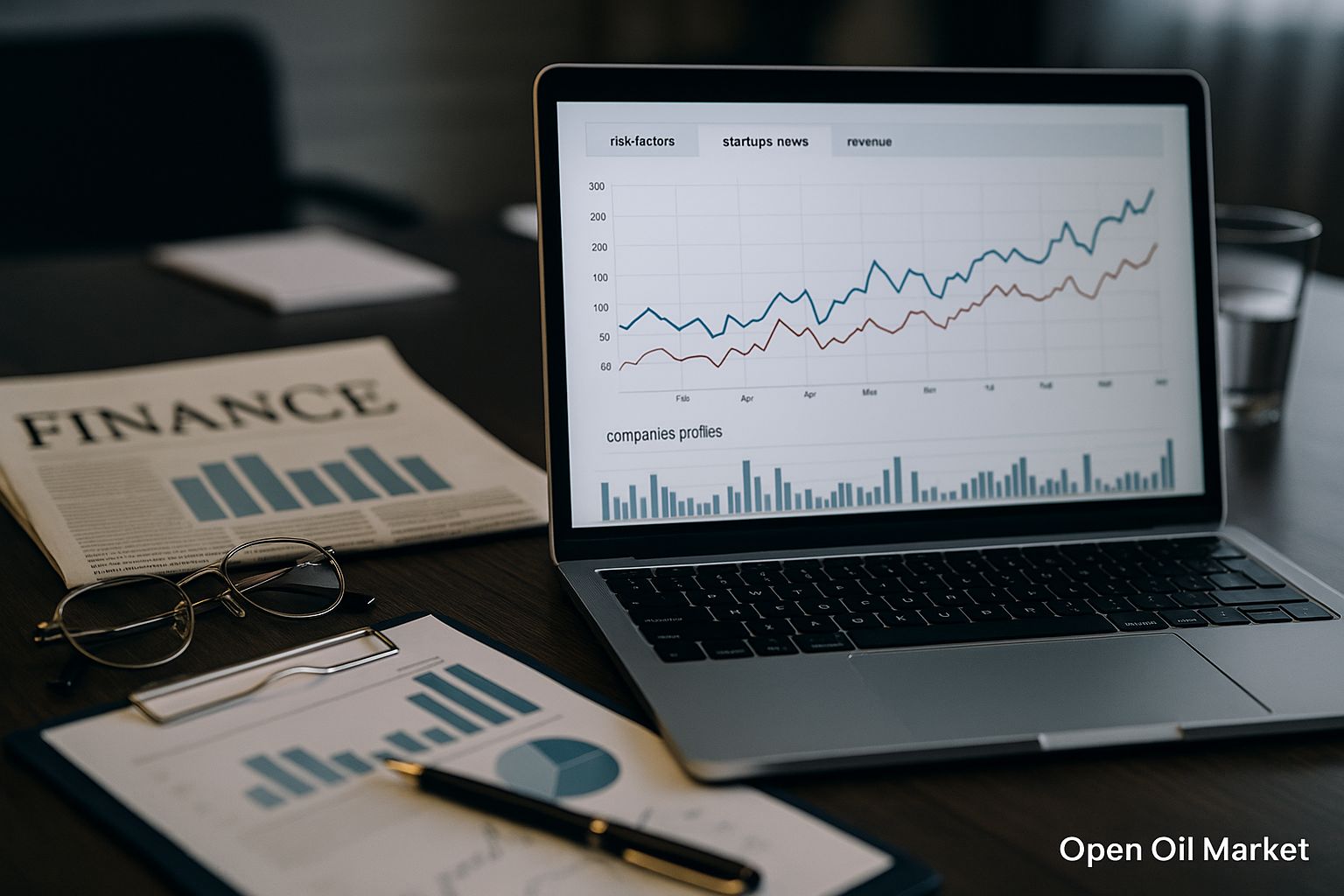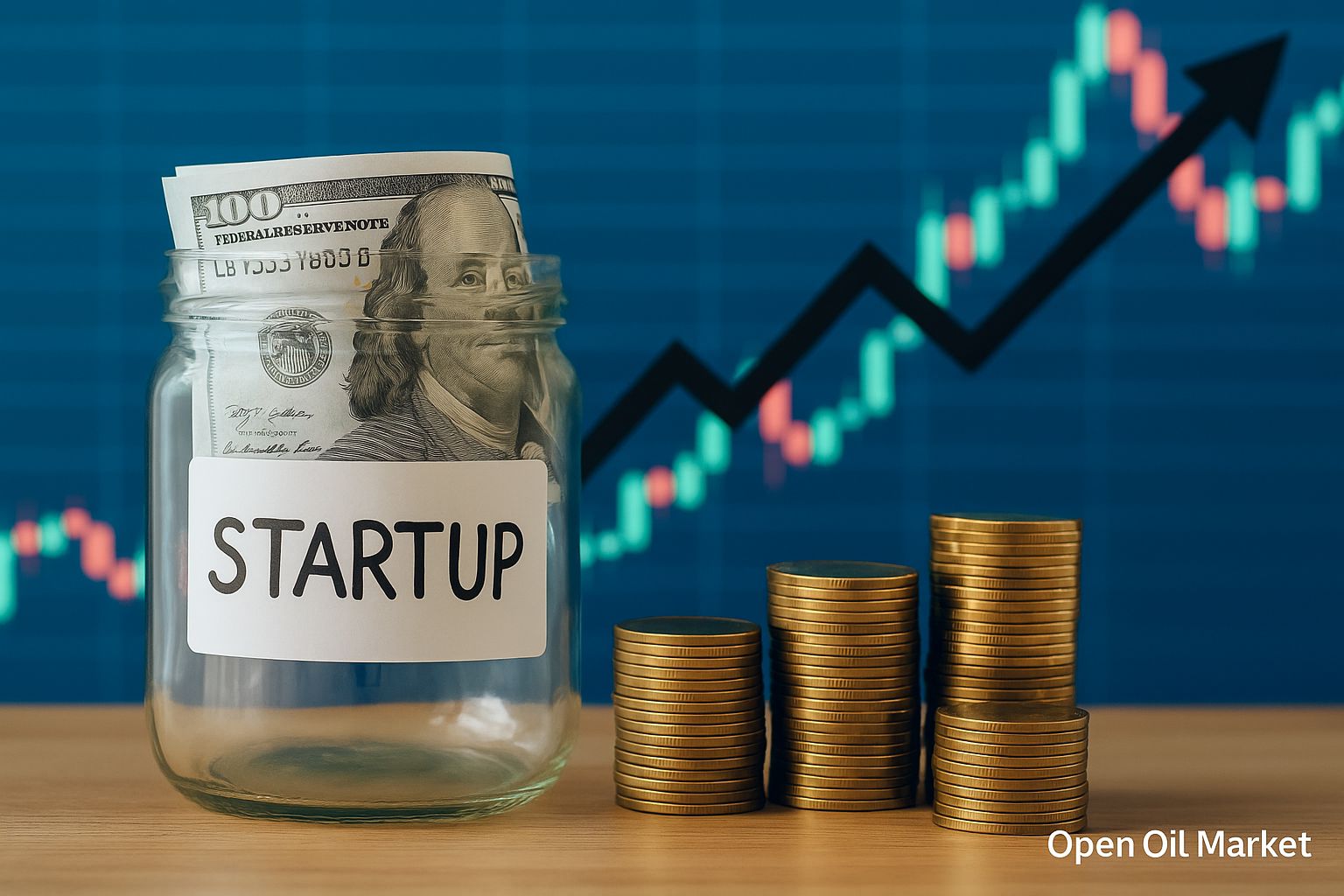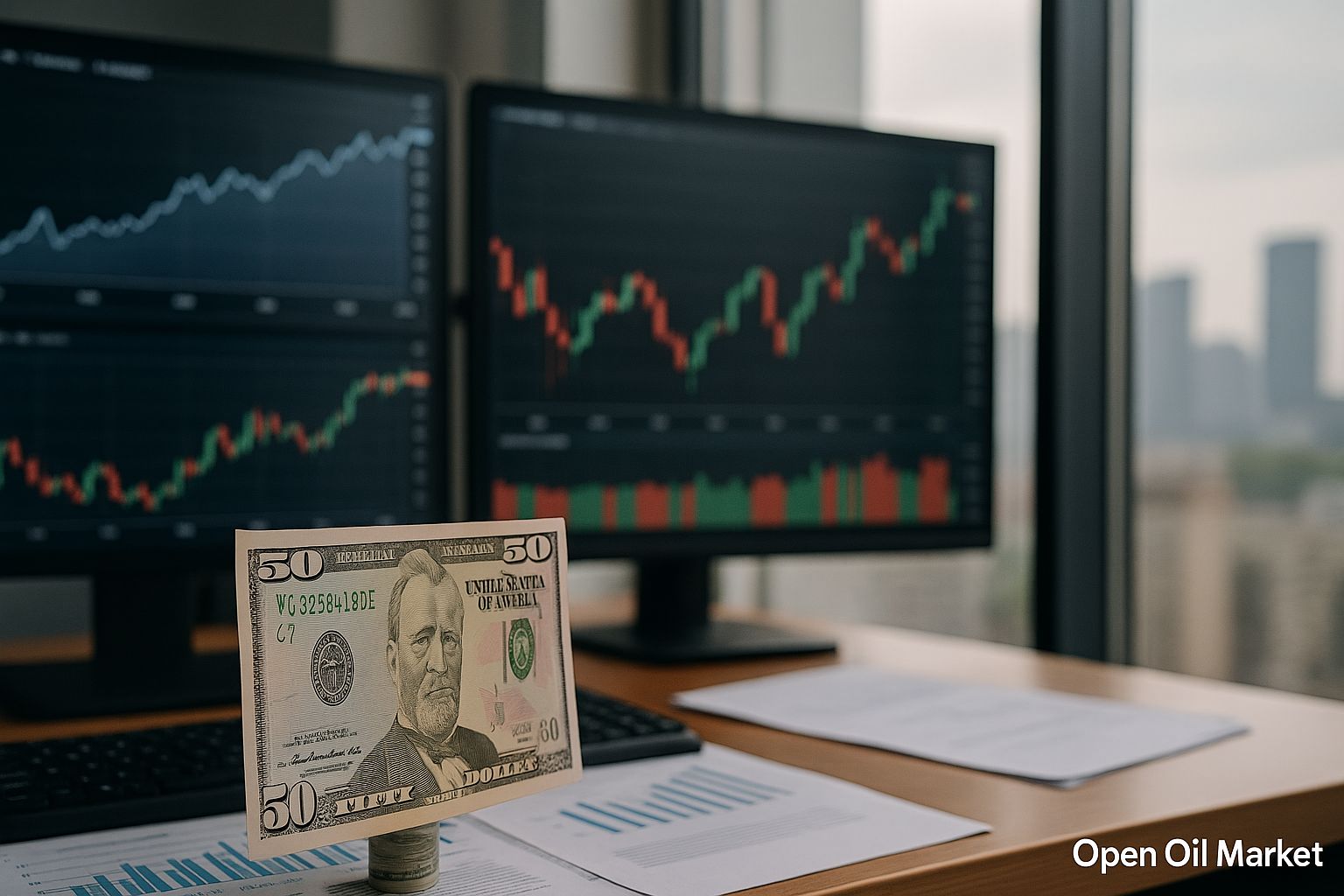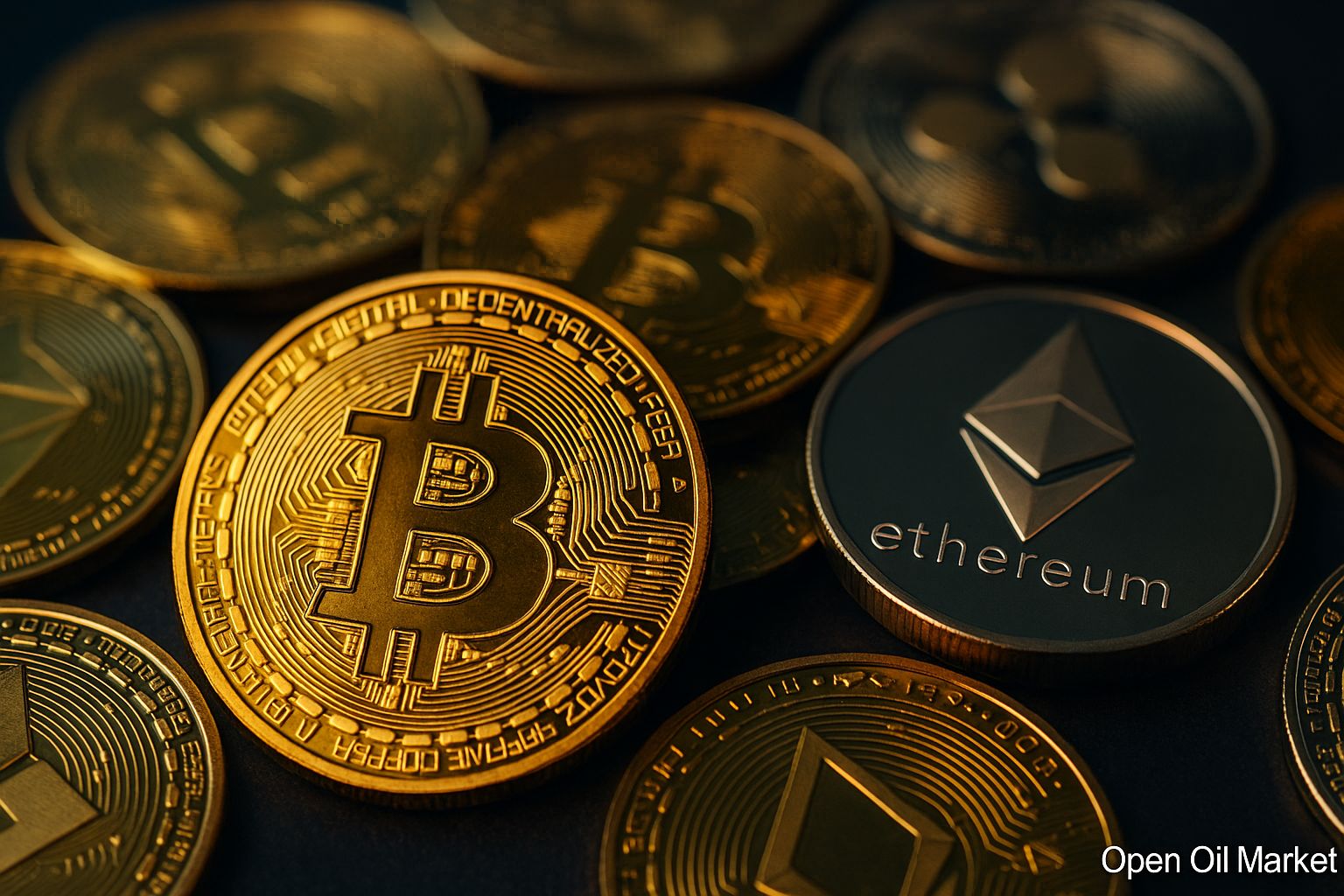
Detailed Overview of Startup and Venture Investment News as of August 10, 2025: The Return of Mega Funds, Record Rounds, Resurgence of the IPO Market, Global Expansion, and Key Deals Worldwide.
By mid-August 2025, the global venture capital market is demonstrating a robust recovery following an extended downturn. Investors worldwide are again actively funding technology startups, engaging in record-setting deals, and IPO plans are drawing renewed attention. Major funds and corporations have reinitiated significant investments by launching new venture programs, while governments across various nations are ramping up support for innovative businesses, eager to keep pace in the global tech race. Analysts estimate that the first half of 2025 was the most successful period for venture capital since 2021 in terms of total investment volume. In the United States and Canada alone, startups attracted approximately $145 billion (+43% year-on-year) during this period, marking the highest half-year figure in the past three years. Overall influx of capital into the venture market has substantially increased, largely driven by a series of massive deals in the field of artificial intelligence.
Venture activity now spans all regions—from Silicon Valley and Europe to Asia, the Middle East, Africa, and Latin America. North America shows particularly high dynamics (accounting for up to 70% of global investments, with a significant portion going into the AI sector), as does the Middle East (where investments in startups reached approximately $2.1 billion in the first half of 2025, up 134% from the previous year). In Europe, the landscape is undergoing a reshuffle: Germany has surpassed the United Kingdom for the first time in a decade in terms of venture investment volume, reflecting the strengthening of continental startup ecosystems. In Asia, the situation is uneven: startup funding in China remains weak (with a regional decline of ~33% year-on-year), while India, Israel, Southeast Asia, and the Gulf countries are witnessing growth and attracting increasing capital. Even local markets (such as CIS countries) are trying to catch their wave of growth despite external constraints. Overall, a new global venture boom is emerging, although investors are still approaching deals selectively and cautiously.
Below are key events and trends shaping the current agenda of the venture market as of August 10, 2025:
- The Return of Mega Funds and Large Investors. Leading players are forming record venture funds and increasing investments, re-injecting capital into the market and amplifying risk appetite.
- Mega Funding Rounds and New “Unicorns.” Unprecedented levels of investment are elevating startup valuations to record heights, particularly in the artificial intelligence sector.
- Revival of the IPO Market. Successful public listings of tech companies and new applications confirm that the long-awaited "window" for exits remains open.
- Diversification of Sector Focus. Venture capital is flowing not only into AI but also into fintech, climate projects, biotechnology, defense, and even crypto startups, broadening market horizons.
- Wave of Consolidation and M&A Deals. Major mergers, acquisitions, and strategic investments are reshaping the industry landscape, creating new opportunities for exits and scaling companies.
- Global Expansion of Venture Capital. The investment boom is extending into new regions—from the Gulf countries and South Asia to Africa and Latin America—forming their own tech ecosystems.
- Local Focus: Russia and the CIS. Despite constraints, new funds and initiatives are emerging to develop local startup ecosystems, increasing investor interest in the region.
The Return of Mega Funds: Big Money Back on the Market
The largest investment players are making a triumphant return to the venture arena, indicating a renewed appetite for risk. Japanese conglomerate SoftBank, after a period of dormancy, is back at the forefront, announcing the establishment of the Vision Fund III with a volume of approximately $40–50 billion, focusing on advanced technologies (with a special emphasis on AI and robotics). Sovereign funds from Gulf countries are also becoming more active: governments are investing billions of dollars in technology projects and initiating government mega-programs to develop the startup sector, creating their own tech hubs in the Middle East. Concurrently, dozens of new venture funds—both independent and corporate—are being launched globally, attracting significant institutional capital for investments in high-tech sectors.
Notable Silicon Valley firms are also increasing their presence. For instance, venture giant Andreessen Horowitz (a16z) is raising a record fund of about $20 billion, primarily focused on late-stage investments in American AI startups. Industry estimates suggest that funds in the U.S. currently have an unprecedented reserve of "dry powder"—over $300 billion in uninvested capital ready to be deployed as market confidence returns. This influx of "big money" enriches the ecosystem with liquidity, providing fuel for new rounds and supporting the growth of promising companies. The return of mega funds and large institutional investors not only intensifies competition for the best deals but also instills confidence in the industry about future capital inflows.
Mega Rounds and New “Unicorns”: Investments Hit Records
The artificial intelligence sector remains the primary driver of the venture boom in 2025, setting new records in funding volume. Investors worldwide are eager to invest in AI leaders, directing colossal amounts into the most promising projects. Nearly every week, new mega funding rounds are announced, confirming AI's status as the main "magnet" for venture capital. For example, Elon Musk's project xAI raised approximately $10 billion (including ~$5 billion in equity and approximately the same in debt financing) and secured vast resources for developing its AI platforms and infrastructure. Insider estimates suggest that xAI's valuation now exceeds $100 billion, making it one of the most valuable private companies globally. Industry flagship OpenAI also closed a round of about ~$8.3 billion with a valuation of around $300 billion (as part of a plan to raise up to $40 billion by the end of 2025). The round was led by Dragoneer, contributing about $2.8 billion, with investors including Blackstone and TPG. The unprecedented scale of this funding underscores the immense market interest in AI industry leaders.
Notably, the investment frenzy extends not only to AI projects but also to infrastructure surrounding them. For example, the American-Israeli startup Vast Data, specializing in data storage systems for AI, is in talks for a multi-billion dollar round at a record valuation. Investors are willing to invest in the "picks and shovels" for the AI ecosystem, understanding the strategic importance of this infrastructure. Consequently, such mega deals are generating a wave of new "unicorns," particularly in the field of artificial intelligence and related sectors. In the second quarter of 2025, nearly half of all venture investments worldwide were directed towards AI projects. The excitement surrounding AI ensures a historic influx of capital, although experts warn of the dangers of overheating in the sector and potential overvaluation of certain companies.
The IPO Market Resurges: A "Window of Opportunity" for Listings
The global market for initial public offerings (IPOs) has revived after a prolonged lull and continues to gain momentum. In Asia, Hong Kong has initiated a new wave of tech IPOs: in recent weeks, several major companies have gone public, collectively raising billions. For instance, Chinese battery manufacturer CATL successfully listed shares worth approximately $5.2 billion, confirming the readiness of investors in the region for significant public transactions. Other heavyweights are also set to list on the Hong Kong Stock Exchange (for example, chip designer Montage Technology plans to raise up to $1 billion), highlighting the resurgence of IPO activity, at least on Asian markets.
Conditions have also significantly improved in the U.S. and Europe. American fintech giant Chime recently debuted on the public market to great success: on its first day, its stock price rose by more than 30%, with a market capitalization reaching approximately $18 billion. This success inspires other candidates. The design platform Figma conducted a long-awaited listing, raising about $1.5 billion (with revenue of $749 million in 2024) at a valuation of around $15–20 billion. Figma shares opened with confident growth, confirming high investor demand for technology offerings. Several well-known startups—including payment platform Stripe, social network Reddit, and Indian e-commerce project Meesho—have already filed applications or are preparing to go public in the second half of 2025. All this signals that the "window" for IPOs remains open longer than many expected, and the market can absorb new listings.
Even the crypto industry is eager to capitalize on the revival of the IPO market. The crypto exchange Bullish (whose investors include billionaire Peter Thiel) has filed for a U.S. listing under the ticker BLSH, aiming for a valuation of around $4 billion. The resurrection of IPO activity encompasses a wide range of companies—from fintech to crypto startups. For the venture ecosystem, the continuation of the IPO wave is crucial: successful public exits finally allow funds to realize profitable exits and direct freed-up capital into new projects. Despite persisting selectiveness among investors, the prolonged "window" encourages more startups to consider going public and prepare for listings well in advance.
Diversification of Investments: Fintech, Climate, Biotech, and Other Sectors on the Rise
In 2025, venture investments are spreading across an increasingly broad range of sectors—the market is no longer exclusively focused on artificial intelligence. Following last year's decline, there is noticeable revitalization in fintech: global investments in financial technology startups increased by approximately 5% year-on-year in the first half of 2025 (to ~$22 billion), signaling a return of confidence after the "fintech winter" of 2022-2023. Additional momentum for the sector has been provided by the successful IPOs of fintech companies (including Chime), which instilled optimism among investors about exits. Concurrently, the boom in "green" technologies continues: funds are eagerly financing climate projects—from renewable energy and electric transport to innovative nuclear setups. For example, Swiss startup Climeworks raised $162 million to develop direct air capture systems (the company has raised over $1 billion in total). Biotechnology and medical startups are also regaining focus: for instance, American Centivax secured $45 million for the development of a universal flu vaccine.
The cybersecurity segment remains one of the market's drivers (as evidenced by the aforementioned multi-billion dollar deals in this area). Crypto and Web3 projects, which experienced a deep downturn, are beginning to recover—venture investments in blockchain startups exceeded $10 billion in Q2 2025 (the highest since 2022). Thus, the venture market is demonstrating maturity and breadth: capital is now distributed across a variety of sectors—from finance and energy to agritech and defense. Investors are diversifying their portfolios, making the innovative ecosystem more resilient to the overheating of individual sectors.
Consolidation and M&A Deals: Enlarging Players
High company valuations and intense competition for markets are driving the startup ecosystem towards consolidation. Major mergers and acquisitions are once again taking center stage, reshaping the power balance in the industry. Tech giants are willing to spend tens of billions of dollars to stay competitive in the race for key innovations. Google has agreed to a record acquisition of cybersecurity startup Wiz for $32 billion—this could become the largest startup acquisition in history. Corporation Meta invested $14 billion in Scale AI, obtaining approximately 49% of its shares at a valuation of ~$28 billion. Even the AI industry leaders themselves are making strategic acquisitions: OpenAI announced the purchase of an AI device development startup (the project of designer Jony Ive) for $6.5 billion. In the defense technology sector in Europe, record deals are also being recorded: German AI startup Helsing raised around €600 million (with the round led by fund Prima Materia) and increased its valuation to ~€12 billion, becoming one of the most valuable young companies in the industry.
Interest in cybersecurity and enterprise software leads to significant acquisitions in the U.S.: according to media reports, American company Palo Alto Networks is planning to acquire the Israeli firm CyberArk for around $25 billion. Such mega deals indicate that even established players are willing to invest enormous resources to strengthen their positions. Overall, current activity in mergers, acquisitions, and major venture deals reflects the reshaping and maturation of the industry. Mature startups are either merging with each other or becoming targets for acquisition by corporations. For venture funds, this is a long-awaited opportunity to realize profitable exits and reallocate capital into new projects.
Global Expansion of Venture Capital: New Markets Gaining Strength
The venture boom of 2025 is truly global, encompassing markets that have recently remained on the periphery. The Middle East is forming giant funds and tech hubs to support innovation, while investors from Gulf countries are increasingly funding startups both domestically and abroad. New "unicorns" are emerging in South and Southeast Asia, and unprecedented capital influx is being recorded in young tech companies in Africa and Latin America. The competition for the best projects is now occurring worldwide—funds are seeking promising teams from San Francisco and Berlin to Dubai, Nairobi, and Mexico City.
- Middle East (MENA): startups in the region attracted ~$2.1 billion in the first half of 2025 (+134% year-on-year), with the largest contributions to growth coming from the UAE and Saudi Arabia.
- Africa: in Africa, startups received ~$1.35 billion in funding in the first six months of 2025 (an increase of 78% compared to the previous year), with record amounts of funding recorded in Nigeria, Egypt, and Kenya.
- Latin America: venture funding in the region increased by 16% in Q2 2025 (quarter-on-quarter), with Mexico surpassing Brazil for the first time since 2012 in terms of investment volume due to substantial deals (for example, fintech startup Klar raised $170 million).
Within Asia, metrics vary: Indian and Southeast Asian startups have maintained stable funding levels (despite a decline in China), and Israel has reached a two-year high in venture deals. Even in less developed markets in Africa and Latin America, their own unicorns are emerging, and governments and corporations are actively supporting technological initiatives. Thus, the global venture ecosystem is becoming more distributed: new centers of innovation are strengthening beyond traditional startup capitals.
Russia and the CIS: Local Focus Amid Global Trends
Despite external constraints, Russia and neighboring countries are also witnessing a revival of venture activity. New funds and investment platforms aimed at supporting local technologies are emerging. For instance, PSB Bank has launched a venture fund of 12 billion rubles, Kama Flow has established a fund of 10 billion rubles, and the medical holding Medscan, together with partners, has created a platform for investments in medtech startups of up to 10 billion rubles. Large corporations are also enhancing their presence: for example, Tinkoff’s ecosystem is developing the T-Invest fund for investments in rapidly growing Russian projects. Significant deals are also occurring in the local market: Krasnodar foodtech startup Qummy raised 440 million rubles at a valuation of around 2.4 billion rubles and announced plans for an IPO in the coming years. In 2025, foreign investors were again officially allowed to participate in transactions with Russian tech companies, opening the door for an influx of foreign capital (primarily from friendly countries).
Although the absolute volumes of venture investments in the region remain modest, they are steadily increasing. According to the Russian Venture Company, approximately $80 million was invested in Russian tech startups in H1 2025, which is about 70% more than in the previous year (albeit still a fraction of the global market). Local investors are focusing on projects in artificial intelligence, import substitution, cybersecurity, and B2B services. A new wave of tech entrepreneurs is gradually forming, capable of developing businesses in challenging conditions. The regional venture ecosystem is striving to take advantage of the global upswing to lay the groundwork for future growth, even if this requires more time and local support.
Conclusions: Cautious Optimism and a Focus on Quality Growth
By the end of summer 2025, sentiment in the venture industry remains cautiously optimistic. Successful IPOs and large rounds demonstrate that the bottom of the downturn has passed, and investors are ready to take risks with their capital again. However, caution persists: preference is given to startups with sustainable business models, solid economics, and a clear path to profitability. The substantial influx of funds into the AI, fintech, and cybersecurity sectors instills confidence in further market growth, but venture funds simultaneously pay increased attention to diversification and risk management. The main priority becomes the quality of growth: an emphasis on long-term sustainability of companies and reasonable valuation of projects, ensuring that the new upswing does not lead to another overheating. Thus, the venture market enters the next development phase with cautious optimism, emphasizing a balanced approach and maintaining a healthy balance between growth and risk.




